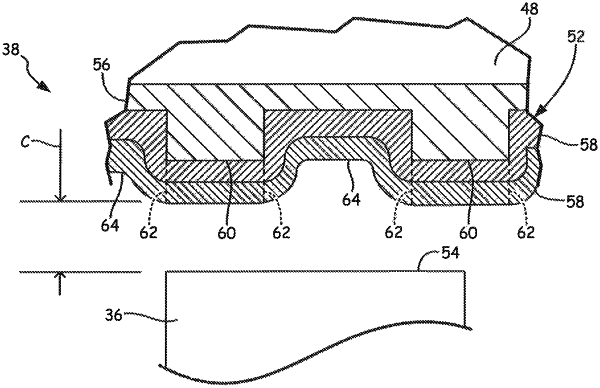| CPC F01D 11/12 (2013.01) [B05D 3/007 (2013.01); C23C 4/01 (2016.01); C23C 4/11 (2016.01); C23C 4/18 (2013.01); C23C 28/042 (2013.01); F01D 11/122 (2013.01); F01D 25/005 (2013.01); F05D 2240/11 (2013.01); F05D 2250/294 (2013.01); F05D 2300/20 (2013.01); Y02T 50/60 (2013.01)] | 6 Claims |

|
1. A method of forming a coating comprising:
disposing a substrate having a plurality of protrusions on a seal;
depositing a topcoat in a soft, unconverted state over the plurality of protrusions, such that depositing the topcoat forms a gas path facing surface of the topcoat having a plurality of dimples formed between adjacent ones of the plurality of protrusions, each dimple of the plurality of dimples having a first depth;
creating a wear pattern of a channel in the topcoat during an initial rub event by accelerating an engine during a green run by running the engine up to a maximum power to cause a blade tip to rub the topcoat to a second depth that is less than the first depth; and
converting the topcoat during a high-temperature event;
wherein converting the topcoat comprises preserving the channel created during the initial rub event.
|